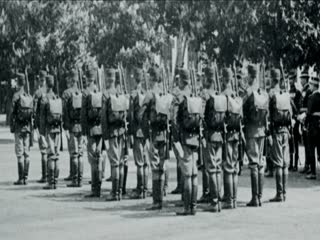 >> View collection The Romanian Film Archive provides access to 12 films from their collection related to World War One.
>> View collection The Romanian Film Archive provides access to 12 films from their collection related to World War One.
Selected Collections
>> View collection Since its foundation in 1999, the Arxiu del So i de la Imatge de Mallorca has tried to gather all kinds of audiovisual materials related to the island of Mallorca: photographs, films, sound recordings, which illustrate the history and intrahistory, heritage and ethnography of the island. They present a fairly extensive sample of the materials that they have been collecting throughout the years in their various fields of interest.
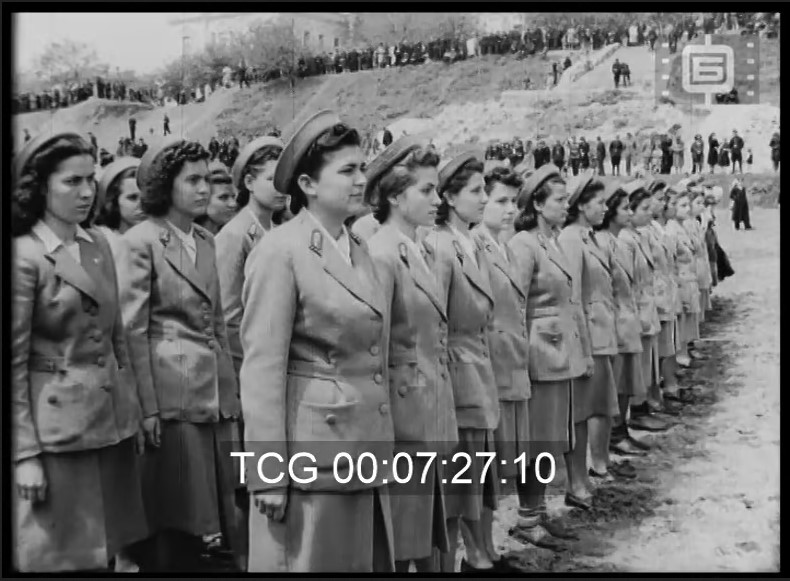 >>View Collection The Bulgarian National Film Archive provides access to their pre-socialist cinema collection as well as their pre-socialist newsreels collection.
>>View Collection The Bulgarian National Film Archive provides access to their pre-socialist cinema collection as well as their pre-socialist newsreels collection.
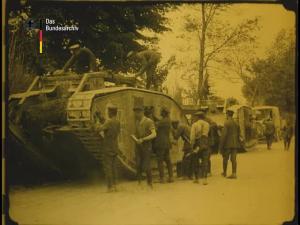 >> View collection From its holdings related to the First World War the Federal Archives / Bundesarchiv-Filmarchiv Berlin makes available different genres such as newsreels – "Messter-Woche", partly tinted, short documentaries – "Bilder aus der großen Schlacht" (Pictures of the great Battle in the West), part one to six.
>> View collection From its holdings related to the First World War the Federal Archives / Bundesarchiv-Filmarchiv Berlin makes available different genres such as newsreels – "Messter-Woche", partly tinted, short documentaries – "Bilder aus der großen Schlacht" (Pictures of the great Battle in the West), part one to six.
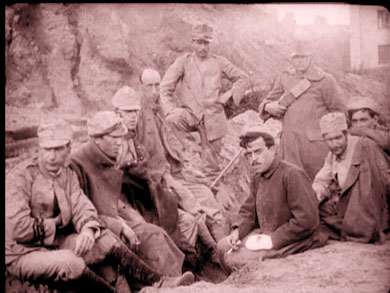 >> View collection The CNC French Film Archives give access to over 100 films related to the First World War. These include films produced both during the war – although authorities were quick to exploit the film industry – and in the post-war period.
>> View collection The CNC French Film Archives give access to over 100 films related to the First World War. These include films produced both during the war – although authorities were quick to exploit the film industry – and in the post-war period.
 >> View collection In this collection, one can find a cinematographic cartography of Portugal and the political events, from the monarchy to the republican revolution; the arrival of the aviation pioneers after the first aerial crossing of the South Atlantic and a football match or a car race; a visit to the zoo and the funerals of a great Poet.
>> View collection In this collection, one can find a cinematographic cartography of Portugal and the political events, from the monarchy to the republican revolution; the arrival of the aviation pioneers after the first aerial crossing of the South Atlantic and a football match or a car race; a visit to the zoo and the funerals of a great Poet.
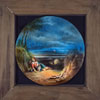 >> View collection The Cinémathèque française’s collection of magic lantern slides illustrates the pre-cinema era and contains some of the finest and most well-preserved slides still in existence. A selection of around 1,500 of these hand-painted and photographic unique artworks from France, Great Britain, Germany and the USA covering the 18th century until the 1920s is available on EFG.
>> View collection The Cinémathèque française’s collection of magic lantern slides illustrates the pre-cinema era and contains some of the finest and most well-preserved slides still in existence. A selection of around 1,500 of these hand-painted and photographic unique artworks from France, Great Britain, Germany and the USA covering the 18th century until the 1920s is available on EFG.
 >> View collection La Cinémathèque française has a precious book collection which retraces the long adventure of the prehistory of the cinema and photographic and film techniques. The approximately 280 books of this collection date back to the 17th century and can be found on EFG.
>> View collection La Cinémathèque française has a precious book collection which retraces the long adventure of the prehistory of the cinema and photographic and film techniques. The approximately 280 books of this collection date back to the 17th century and can be found on EFG.
 >> View collection The scientist Étienne-Jules Marey (1830 - 1904) used photographic methods to study the movement of human and animal throughout his life. La cinémathèque offers access to around 400 photos from the estate of Étienne-Jules Marey via EFG.
>> View collection The scientist Étienne-Jules Marey (1830 - 1904) used photographic methods to study the movement of human and animal throughout his life. La cinémathèque offers access to around 400 photos from the estate of Étienne-Jules Marey via EFG.
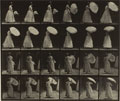 >> View collection With the serialisation of photos Eadward Muybridge was one of the first who created the impression of moving images. EFG gives access to about 700 images that emanate from the estate of Muybridge.
>> View collection With the serialisation of photos Eadward Muybridge was one of the first who created the impression of moving images. EFG gives access to about 700 images that emanate from the estate of Muybridge.
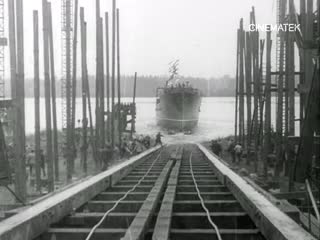 >> View collection The CINEMATEK World War One collection contains a large variety of newsreels, documentary and feature films, mostly produced in the decade after the war. The images include representations of Belgium ("Poor Little Belgium") as a victim of the 'Great War', the fate and suffering of women during the war or the Flemish emancipation and how films mainly produced by Clemens De Landtsheer contributed to the myth of the Flemish soldier on the Yser.
>> View collection The CINEMATEK World War One collection contains a large variety of newsreels, documentary and feature films, mostly produced in the decade after the war. The images include representations of Belgium ("Poor Little Belgium") as a victim of the 'Great War', the fate and suffering of women during the war or the Flemish emancipation and how films mainly produced by Clemens De Landtsheer contributed to the myth of the Flemish soldier on the Yser.
 >> View collection The Italian company Corona Cinematografica produced documentary films, animated films, and newsreels from the 1960s to the 1990s. For many greater or lesser directors, Corona Cinematografica provided a kind of gymnasium in which to acquire the craft or consolidate already honed competence. And in many cases to bring into play their own creativity.
>> View collection The Italian company Corona Cinematografica produced documentary films, animated films, and newsreels from the 1960s to the 1990s. For many greater or lesser directors, Corona Cinematografica provided a kind of gymnasium in which to acquire the craft or consolidate already honed competence. And in many cases to bring into play their own creativity.
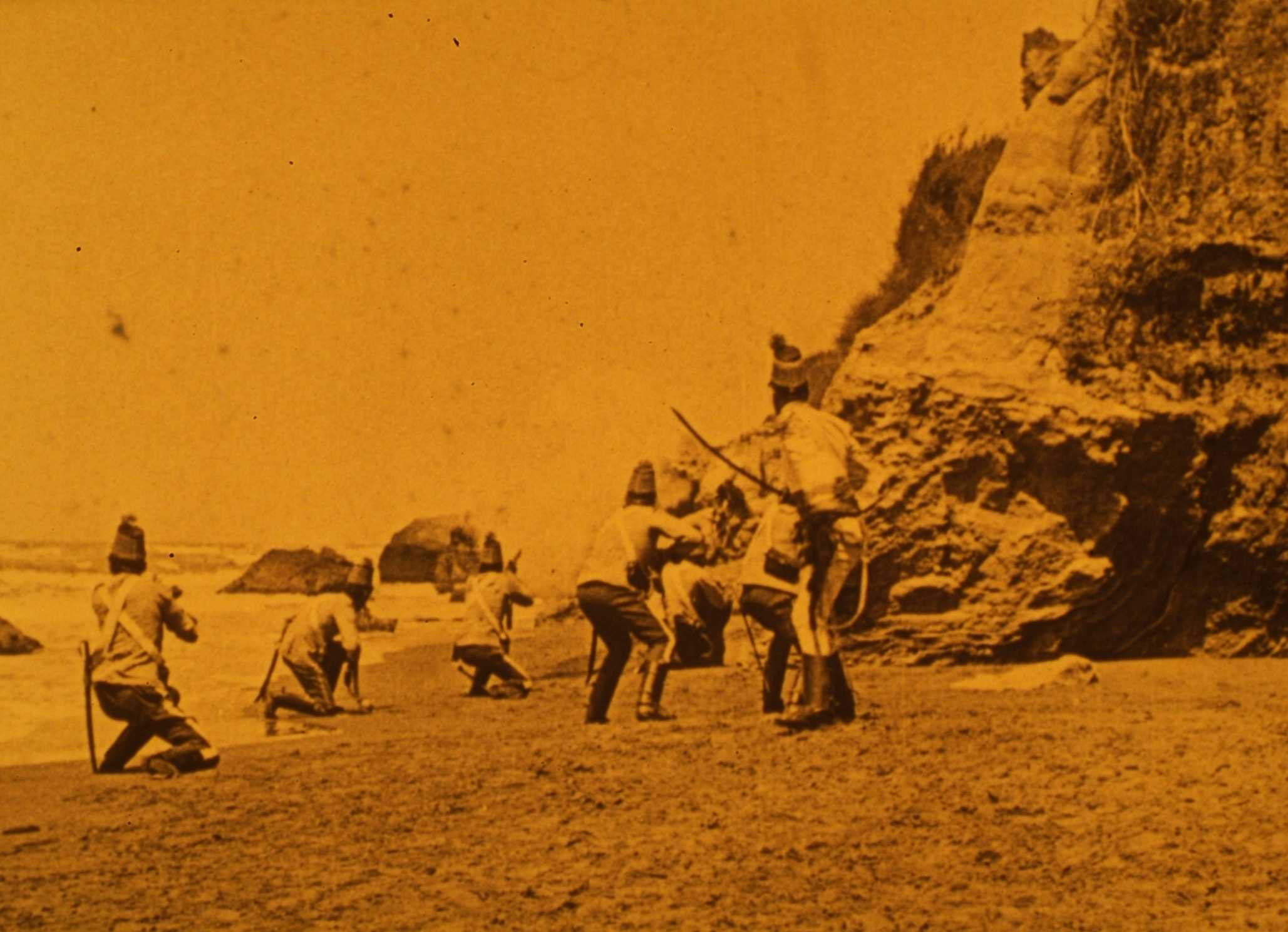
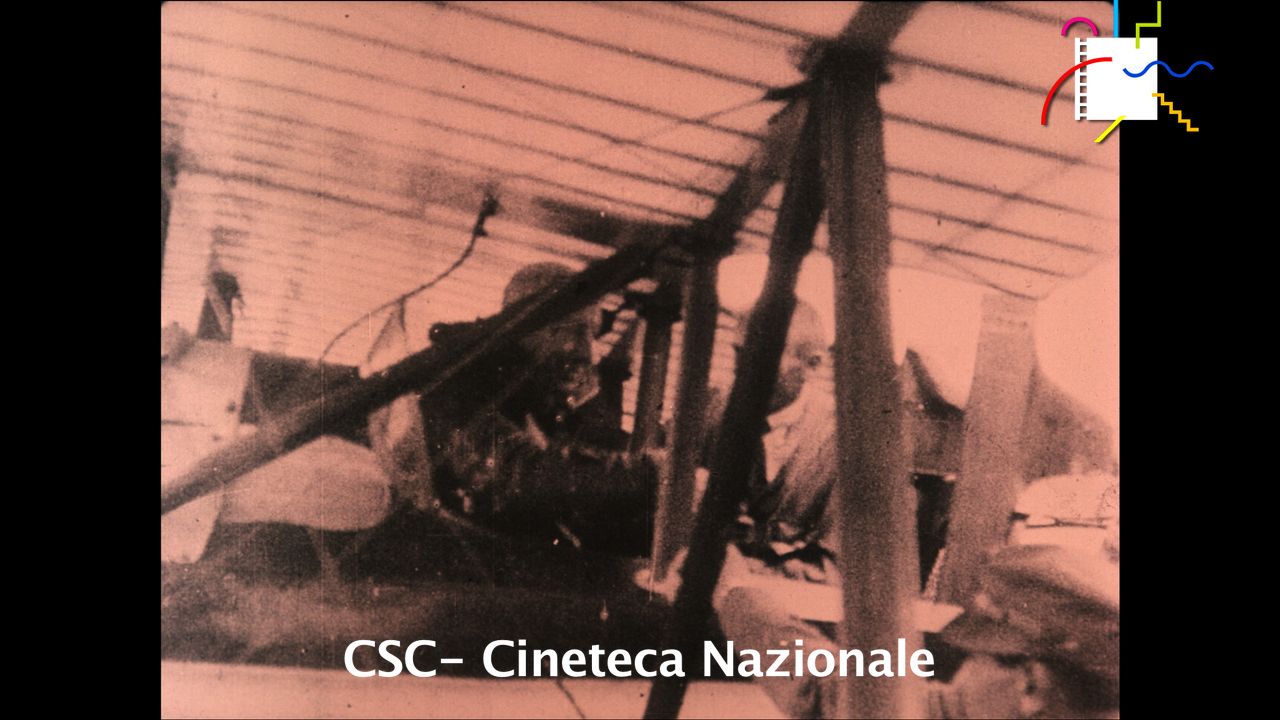 >> View collection Cineteca Nazionale in Rome provides access to a collection of films related to the First World War.
>> View collection Cineteca Nazionale in Rome provides access to a collection of films related to the First World War.
 >> View collection This collection contains around 6.500 digitised film-censorship related documents from Austria, Czechoslovakia and Germany in the 1920s and 1930s. The documents had been assembled from various film and state archives by Deutsches Filminstitut – DIF, Filmarchiv Austria and Národní filmový archiv in the framework of the EU-funded project "COLLATE: Collaboratory for Annotation, Indexing and Retrieval of Digitized Historical Archive Material".
>> View collection This collection contains around 6.500 digitised film-censorship related documents from Austria, Czechoslovakia and Germany in the 1920s and 1930s. The documents had been assembled from various film and state archives by Deutsches Filminstitut – DIF, Filmarchiv Austria and Národní filmový archiv in the framework of the EU-funded project "COLLATE: Collaboratory for Annotation, Indexing and Retrieval of Digitized Historical Archive Material".
.jpg) >> View collection The complete collection of Danish Silent Film Programmes from the Danish Film Institute is a unique resource both to surviving films, but also to the narrative content of films that no longer exist. This collection gives an insight to scholars, enabling a broader insight into the types of films that were made and distributed, even if the films themselves did not survive. As marketing material it is also an invaluable resource for academic research in fan and film culture.
>> View collection The complete collection of Danish Silent Film Programmes from the Danish Film Institute is a unique resource both to surviving films, but also to the narrative content of films that no longer exist. This collection gives an insight to scholars, enabling a broader insight into the types of films that were made and distributed, even if the films themselves did not survive. As marketing material it is also an invaluable resource for academic research in fan and film culture.
 >> View collections on EFG The collection of the Danish Film Institute available on EFG contains a number of early documentary films, which display the life and look of the Danish society in the period of 1906 to 1940. Among the 300 films are straight depictions of modern production equipment and trade, as well as more propagandistic titles and news items. The over 50 early fiction films available are a raw collection of short films that give an impression of what early audiences were entertained by.
>> View collections on EFG The collection of the Danish Film Institute available on EFG contains a number of early documentary films, which display the life and look of the Danish society in the period of 1906 to 1940. Among the 300 films are straight depictions of modern production equipment and trade, as well as more propagandistic titles and news items. The over 50 early fiction films available are a raw collection of short films that give an impression of what early audiences were entertained by.
_mp2.jpg) >> View collection The Danish Film Institute gives access to documentary footage and films as well as fiction films from the period 1914-1918. The documentary collection contains both general "news" items from the period, with events and actuality items, but also some of the earliest footage from the German captured territories in Northern France and Prussia.
>> View collection The Danish Film Institute gives access to documentary footage and films as well as fiction films from the period 1914-1918. The documentary collection contains both general "news" items from the period, with events and actuality items, but also some of the earliest footage from the German captured territories in Northern France and Prussia.
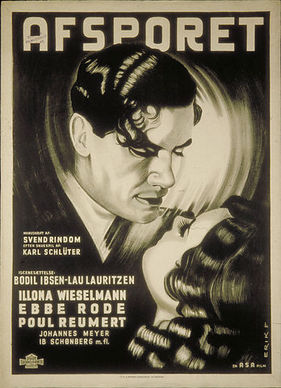 >> View collection The Danish Film Institute's Poster Collection includes posters from the earliest surviving, Morfinisten from 1912, to the posters of current films. The collection is both a scholarly resource showing the development of poster art, but also a visual pleasure to browse, as these artifacts were meant to create instant attraction to the film. The posters are often works of art in themselves. Read more about the Danish Film Institute's contribution to EFG on DFI's website.
>> View collection The Danish Film Institute's Poster Collection includes posters from the earliest surviving, Morfinisten from 1912, to the posters of current films. The collection is both a scholarly resource showing the development of poster art, but also a visual pleasure to browse, as these artifacts were meant to create instant attraction to the film. The posters are often works of art in themselves. Read more about the Danish Film Institute's contribution to EFG on DFI's website.
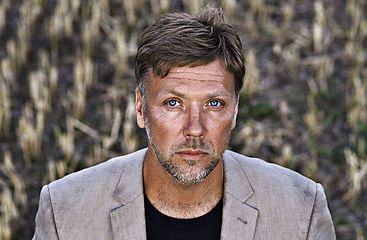 >> View collection The EFG displays over 45,000 film stills illustrating more than a century of Danish film production. The vast collection provides insight into the visual quality and style of Danish cinema, from early silent films starring Asta Nielsen to recent works by internationally acclaimed directors such as Susanne Bier and Lars von Trier. Read more about the Danish Film Institute's contribution to EFG on DFI's website.
>> View collection The EFG displays over 45,000 film stills illustrating more than a century of Danish film production. The vast collection provides insight into the visual quality and style of Danish cinema, from early silent films starring Asta Nielsen to recent works by internationally acclaimed directors such as Susanne Bier and Lars von Trier. Read more about the Danish Film Institute's contribution to EFG on DFI's website.
 >> View collection The 77 films by Danish cinema pioneer Peter Elfelt (1866-1931) are not only interesting from a cinematic point of view but they are also unique contemporary documents. As royal court photographer, Elfelt had access to the most important people and events at his time, which is reflected by his films, focusing on Denmark's high society.
>> View collection The 77 films by Danish cinema pioneer Peter Elfelt (1866-1931) are not only interesting from a cinematic point of view but they are also unique contemporary documents. As royal court photographer, Elfelt had access to the most important people and events at his time, which is reflected by his films, focusing on Denmark's high society.
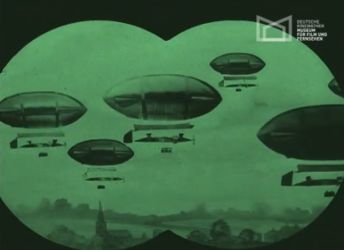 >> View collection The World War One collection from the archives of the Deutsche Kinemathek contains over thirty films as well as other film-related material such as film related documents, posters and film stills.
>> View collection The World War One collection from the archives of the Deutsche Kinemathek contains over thirty films as well as other film-related material such as film related documents, posters and film stills.
 >> View collection Founded by film producer Artur Brauner (*1918) in 1946, the Central Cinema Company (CCC) was one of the largest and most important film production companies of the German post-war era. The company archive held in the German Film Institute comprises around 4,000 folders of CCC's production material.
>> View collection Founded by film producer Artur Brauner (*1918) in 1946, the Central Cinema Company (CCC) was one of the largest and most important film production companies of the German post-war era. The company archive held in the German Film Institute comprises around 4,000 folders of CCC's production material.
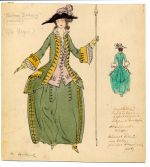 More than 200 set designs and 900 film costume designs, sketches and notes by distinguished German (film) architects Otto Hunte, Walter Reimann and Hans Poelzig and costume designers such as Ali Hubert, Helga Kischkat-Reuter and Irms Pauli can now be accessed via the EFG. Many of the design sketches represent milestones in their field, e.g. the set designs for “Metropolis” (1925/26) or “Der Golem wie er in die Welt kam” (1920).
More than 200 set designs and 900 film costume designs, sketches and notes by distinguished German (film) architects Otto Hunte, Walter Reimann and Hans Poelzig and costume designers such as Ali Hubert, Helga Kischkat-Reuter and Irms Pauli can now be accessed via the EFG. Many of the design sketches represent milestones in their field, e.g. the set designs for “Metropolis” (1925/26) or “Der Golem wie er in die Welt kam” (1920).
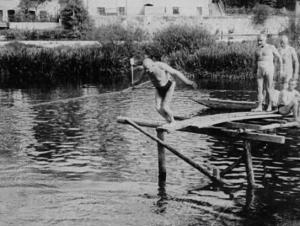 >> View collection Since the 1910s, Oskar Barnack – inventor of the "Leica" camera – has documented the activities around Wetzlar (Germany) with his self-constructed camera. He filmed floods and town fairs, medical experiments, sporting events and the company that employed him as a chief engineer: the Optical Works Ernst Leitz in Wetzlar.
>> View collection Since the 1910s, Oskar Barnack – inventor of the "Leica" camera – has documented the activities around Wetzlar (Germany) with his self-constructed camera. He filmed floods and town fairs, medical experiments, sporting events and the company that employed him as a chief engineer: the Optical Works Ernst Leitz in Wetzlar.
 >> View collection From 1969 to 1974, camera man and photographer Peter Gauhe worked closely with German director Rainer Werner Fassbinder. Over 4,000 digitised set photos and film stills document the shooting of such films as “Händler der vier Jahreszeiten” and “Angst essen Seele auf”.
>> View collection From 1969 to 1974, camera man and photographer Peter Gauhe worked closely with German director Rainer Werner Fassbinder. Over 4,000 digitised set photos and film stills document the shooting of such films as “Händler der vier Jahreszeiten” and “Angst essen Seele auf”.
 >> View collection The corpus of films digitised by DFF within the framework of EFG1914 is largely composed of non-fiction material such as newsreels, documentaries, propaganda films, and amateur footage. Fictional films make up a smaller part of the material and include, beyond feature films, some “Tonbilder” (sound pictures) – short films that were synchronously accompanied by a gramophone record in cinema.
>> View collection The corpus of films digitised by DFF within the framework of EFG1914 is largely composed of non-fiction material such as newsreels, documentaries, propaganda films, and amateur footage. Fictional films make up a smaller part of the material and include, beyond feature films, some “Tonbilder” (sound pictures) – short films that were synchronously accompanied by a gramophone record in cinema.
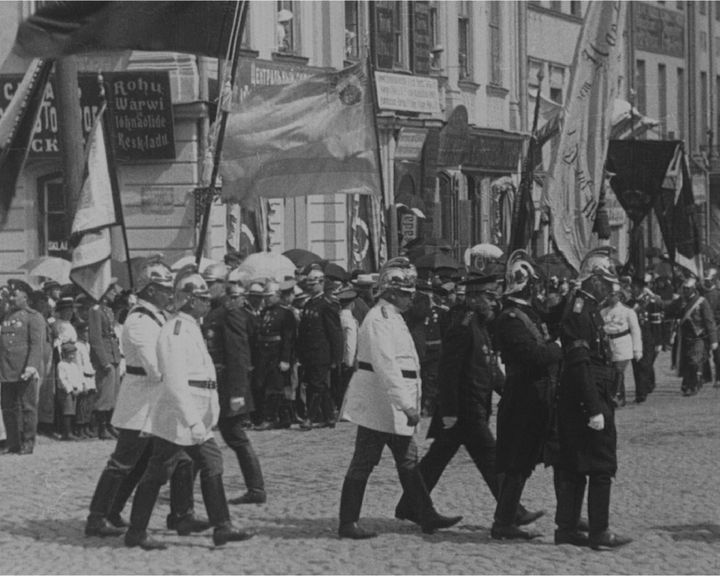 >> View collection Estonian Film Archives is giving access to 6 films and about 2,500 photos. Two of the films – "Tartu and its Surroundings" and "Tartu Volunteer Firefighters’ Society Celebrating its 50th Anniversary" – depict war-time life in the Southern Estonian town of Tartu, called Dorpat at the time. The films were made by the very first Estonian filmmaker – Johannes Pääsuke.
>> View collection Estonian Film Archives is giving access to 6 films and about 2,500 photos. Two of the films – "Tartu and its Surroundings" and "Tartu Volunteer Firefighters’ Society Celebrating its 50th Anniversary" – depict war-time life in the Southern Estonian town of Tartu, called Dorpat at the time. The films were made by the very first Estonian filmmaker – Johannes Pääsuke.
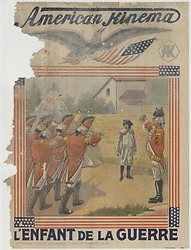 >> View collection Most of the posters EYE is contributing for EFG1914 are part of the Desmet Collection. Jean Desmet was a pioneer film distributor whose business went into bankruptcy around 1916, due to the economic effects of the WWI. Until then, Desmet tried to trade with all kinds of film companies from all over the world, and kept his papers and promotional material for the rest of his life.
>> View collection Most of the posters EYE is contributing for EFG1914 are part of the Desmet Collection. Jean Desmet was a pioneer film distributor whose business went into bankruptcy around 1916, due to the economic effects of the WWI. Until then, Desmet tried to trade with all kinds of film companies from all over the world, and kept his papers and promotional material for the rest of his life.
>> View collection EYE Filmmuseum makes available around 700 films from their collection. Over 300 films from the EYE collection relating to World War I. can be found here.
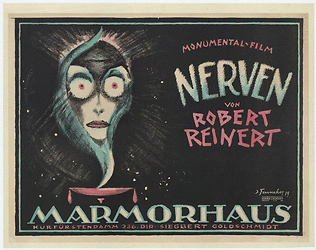 >> View collection For the EFG1914 project, EYE is contributing more than 300 film items totaling about 100 hours, and more than 900 film posters from the 1910s. The films are selected according to various criteria. Newsreels, travelogues and also fiction films from the period of 1914 to 1918 from numerous countries are included.
>> View collection For the EFG1914 project, EYE is contributing more than 300 film items totaling about 100 hours, and more than 900 film posters from the 1910s. The films are selected according to various criteria. Newsreels, travelogues and also fiction films from the period of 1914 to 1918 from numerous countries are included.
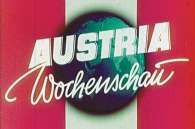 >> View collection On the European Film Gateway, the Filmarchiv Austria presents clips from the "Austria Wochenschau" (1949 – 1994), a newsreel collection which forms today a substantial starting point for Austria’s documented audiovisual contemporary history.
>> View collection On the European Film Gateway, the Filmarchiv Austria presents clips from the "Austria Wochenschau" (1949 – 1994), a newsreel collection which forms today a substantial starting point for Austria’s documented audiovisual contemporary history.
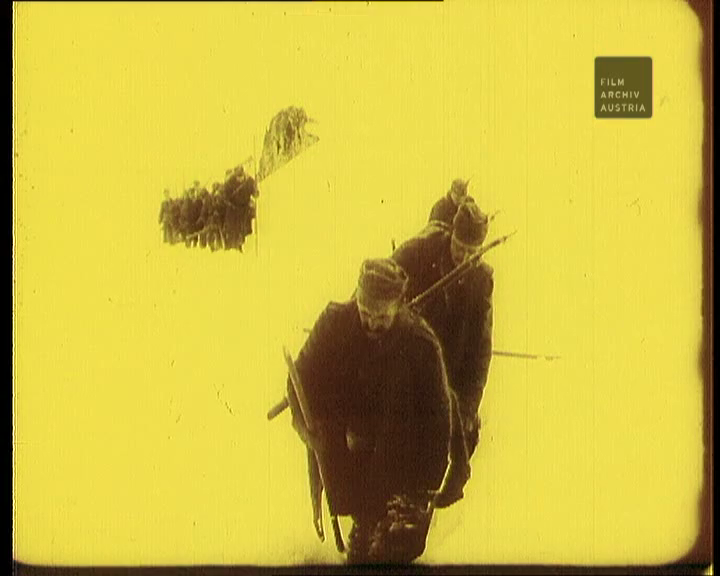 >> View collection Filmarchiv Austria makes available 10 films from their collection relating to World War I.
>> View collection Filmarchiv Austria makes available 10 films from their collection relating to World War I.
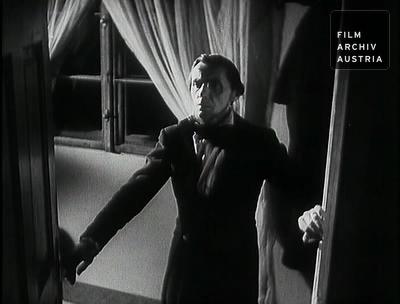
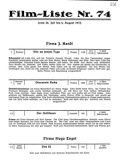 >> View collection "Paimann’s Filmlisten”, literal "Paimann's Film Lists“, was an Austrian film review journal founded by Franz Paimann. The periodical listed all new films released in Austria between 1916 and 1965. That includes all feature films which were distributed in Austria, including foreign production and non-fictional motion pictures. Each entry contains a synopsis, credit details and a rating. The first issue of "Paimann's Film Lists“ appeared 1916, at that time mere newsletters designated for Austrian cinema owners only. Starting from 1921 until 1965 "Paimann's Film Lists“ became a weekly journal. From February 1943 until January 1946 the periodical was not authorized for publication.
>> View collection "Paimann’s Filmlisten”, literal "Paimann's Film Lists“, was an Austrian film review journal founded by Franz Paimann. The periodical listed all new films released in Austria between 1916 and 1965. That includes all feature films which were distributed in Austria, including foreign production and non-fictional motion pictures. Each entry contains a synopsis, credit details and a rating. The first issue of "Paimann's Film Lists“ appeared 1916, at that time mere newsletters designated for Austrian cinema owners only. Starting from 1921 until 1965 "Paimann's Film Lists“ became a weekly journal. From February 1943 until January 1946 the periodical was not authorized for publication.
 >> View collection Between 1906 and 1910, Saturn, a Vienna-based company, produced a number of erotic films, which were the first fiction films produced in a continuous manner in the Habsburg Empire. Saturn produced films with erotic content only – and that was how it advertised itself in different trade publications, publicizing its films in a printed catalogue, very similar to the French Pathé productions, which Saturn sometimes remade in an adult manner.
>> View collection Between 1906 and 1910, Saturn, a Vienna-based company, produced a number of erotic films, which were the first fiction films produced in a continuous manner in the Habsburg Empire. Saturn produced films with erotic content only – and that was how it advertised itself in different trade publications, publicizing its films in a printed catalogue, very similar to the French Pathé productions, which Saturn sometimes remade in an adult manner.
>> View collection The collection of films connected with the work of Segundo de Chomón is one of the most valuable holdings of the Filmoteca de Catalunya. Born in Teruel in 1871 and based in Paris, Barcelona and Turin during the early years of the 20th century, Segundo de Chomón is a notable early film-maker. His work includes cinema of attractions and phantasmagorias but also comic films and documentaries, as well as numerous projects he worked on as a trick film and special effects technician.
 >> View collection Filmoteca Española presents a selection of documentaries, newsreels and non-fiction movies showing the Spanish daily city and country life during the second decade of the 20th century. Amateur movies are also included. Newsreels include international news of WWI (The Battle of the Somme, Marshall Von MacKensen advancing on Dobrudja… and more).
>> View collection Filmoteca Española presents a selection of documentaries, newsreels and non-fiction movies showing the Spanish daily city and country life during the second decade of the 20th century. Amateur movies are also included. Newsreels include international news of WWI (The Battle of the Somme, Marshall Von MacKensen advancing on Dobrudja… and more).
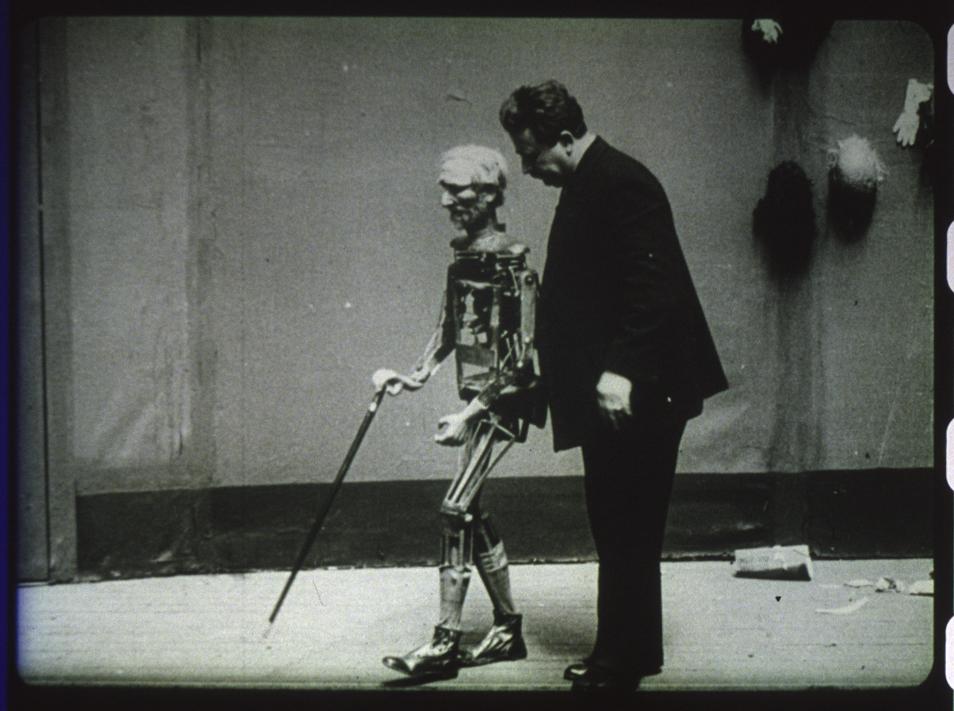 >> View collection CulturArts-IVAC contributes a feature film collection that reflects the disadvantageous impact of the war in the film production of a non-belligerent country like Spain. Three melodramas starring the great actress Margarita Xirgu and one more starring the exotic dancer Tortola Valencia show the impossibility of the Spanish film industry, then led by Barcelona-based producers, for taking advantage of those exceptional circumstances.
>> View collection CulturArts-IVAC contributes a feature film collection that reflects the disadvantageous impact of the war in the film production of a non-belligerent country like Spain. Three melodramas starring the great actress Margarita Xirgu and one more starring the exotic dancer Tortola Valencia show the impossibility of the Spanish film industry, then led by Barcelona-based producers, for taking advantage of those exceptional circumstances.
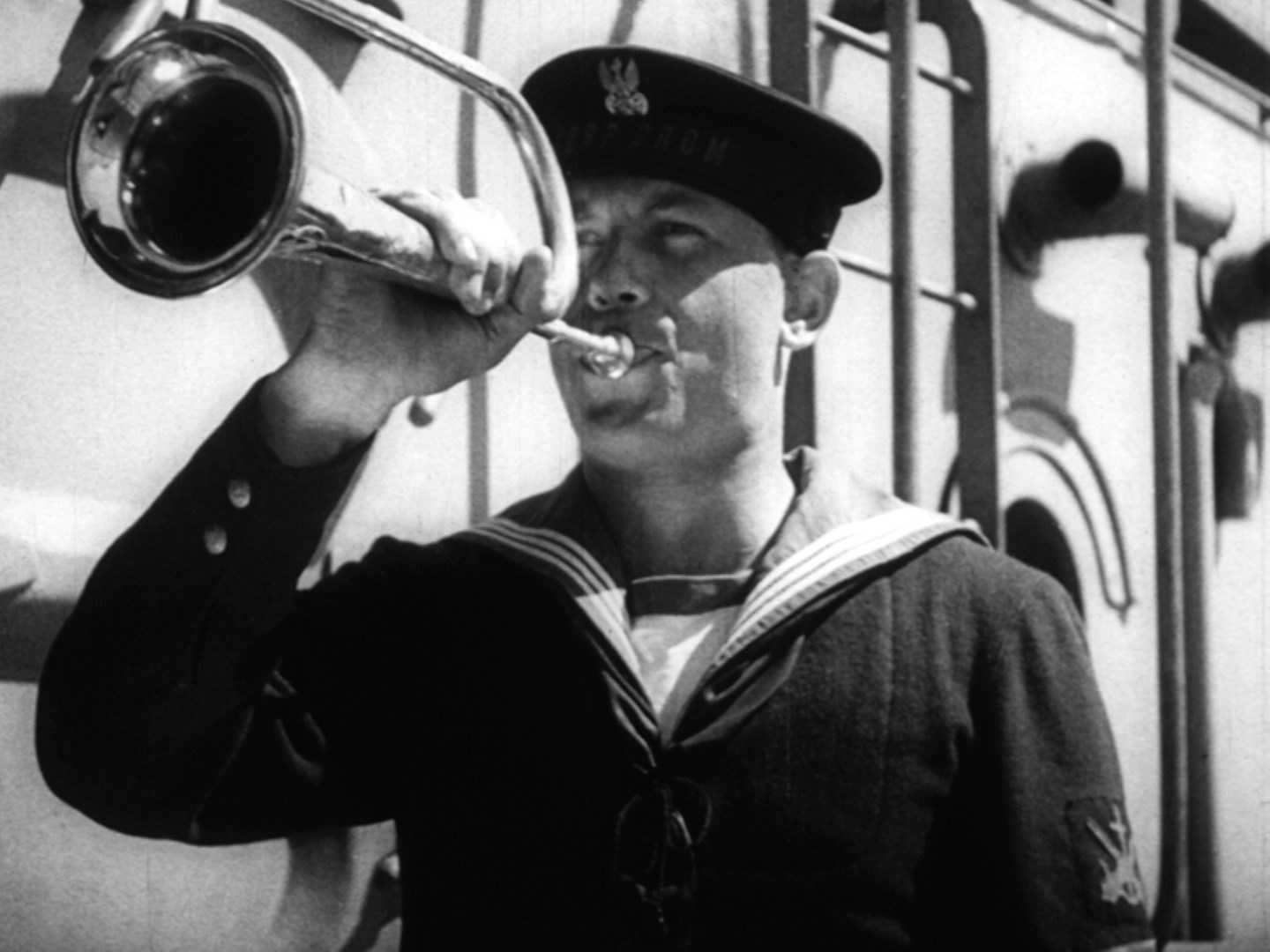 >> View collection This collection of documentary films held by the National Film Archive in Warsaw includes reportages produced by the leading newsreel producer the Polish Telegraphic Agency (PAT), among them a film titled “News, dispatch, information”(Wieść, depesza, informacja) about the daily life of PAT reporters;
>> View collection This collection of documentary films held by the National Film Archive in Warsaw includes reportages produced by the leading newsreel producer the Polish Telegraphic Agency (PAT), among them a film titled “News, dispatch, information”(Wieść, depesza, informacja) about the daily life of PAT reporters;
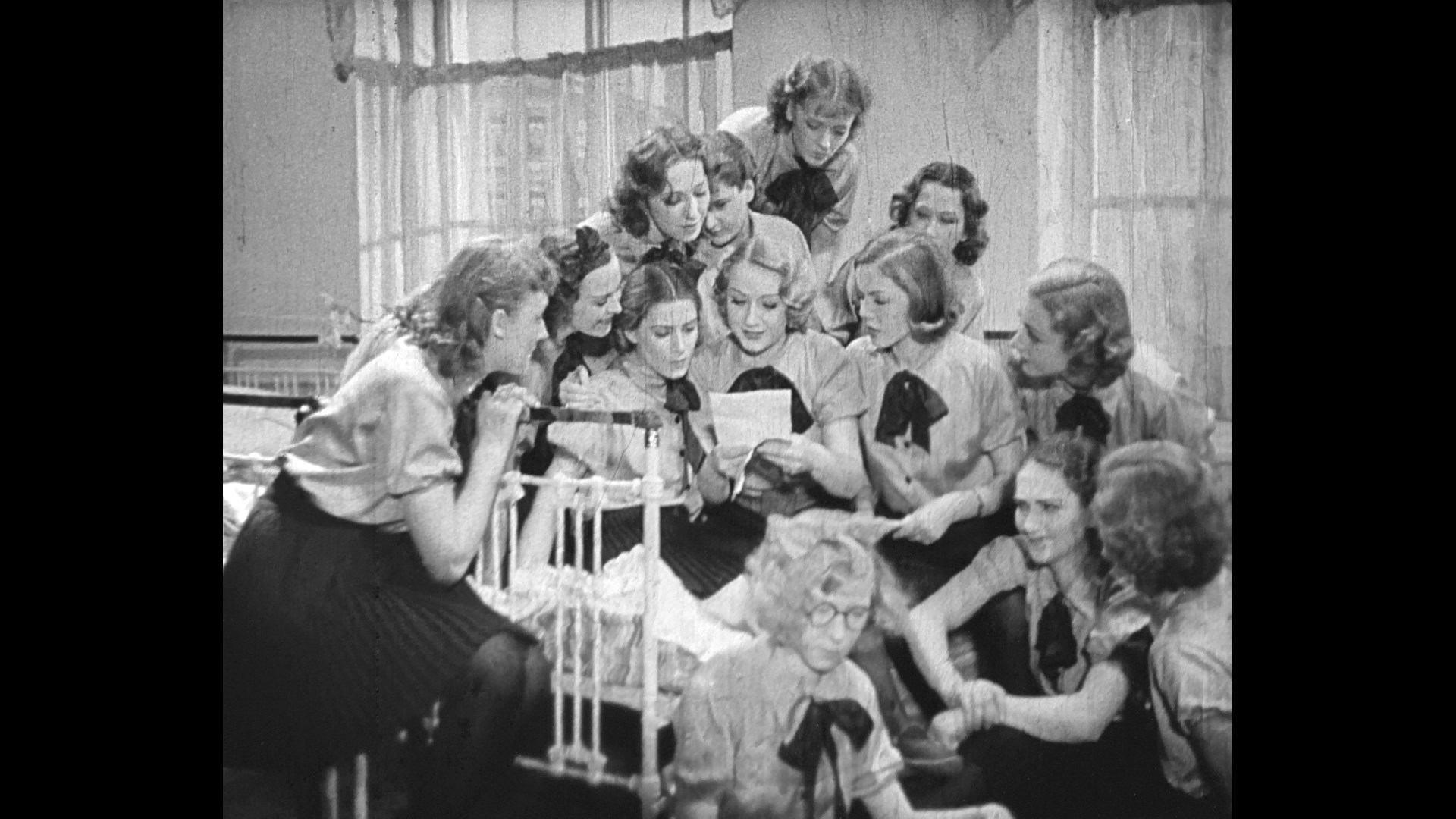 >> View collection This collection of feature films held by the National Film Archive in Warsaw contains several fragments of both silent films and the sound films. One of these silent films is “People with no tomorrow” (Ludzie bez jutra, 1919) by Aleksander Hertz, the print of which was discovered in Bundesarchiv a few years ago and digitally remastered by the National Film Archive in Warsaw.
>> View collection This collection of feature films held by the National Film Archive in Warsaw contains several fragments of both silent films and the sound films. One of these silent films is “People with no tomorrow” (Ludzie bez jutra, 1919) by Aleksander Hertz, the print of which was discovered in Bundesarchiv a few years ago and digitally remastered by the National Film Archive in Warsaw.
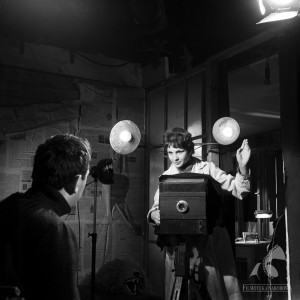 >> View collection This collection of film stills held by the National Film Archive in Warsaw is thematically related to the history of Polish film (films, people, events, etc.). Digital database includes the collection of stills, negatives and diapositives; there are both published and unpublished stills and on-the-set production stills (from films created before 1989), photos of artists (directors, actors, camera operators, etc.) as well as photographs from film premieres.
>> View collection This collection of film stills held by the National Film Archive in Warsaw is thematically related to the history of Polish film (films, people, events, etc.). Digital database includes the collection of stills, negatives and diapositives; there are both published and unpublished stills and on-the-set production stills (from films created before 1989), photos of artists (directors, actors, camera operators, etc.) as well as photographs from film premieres.
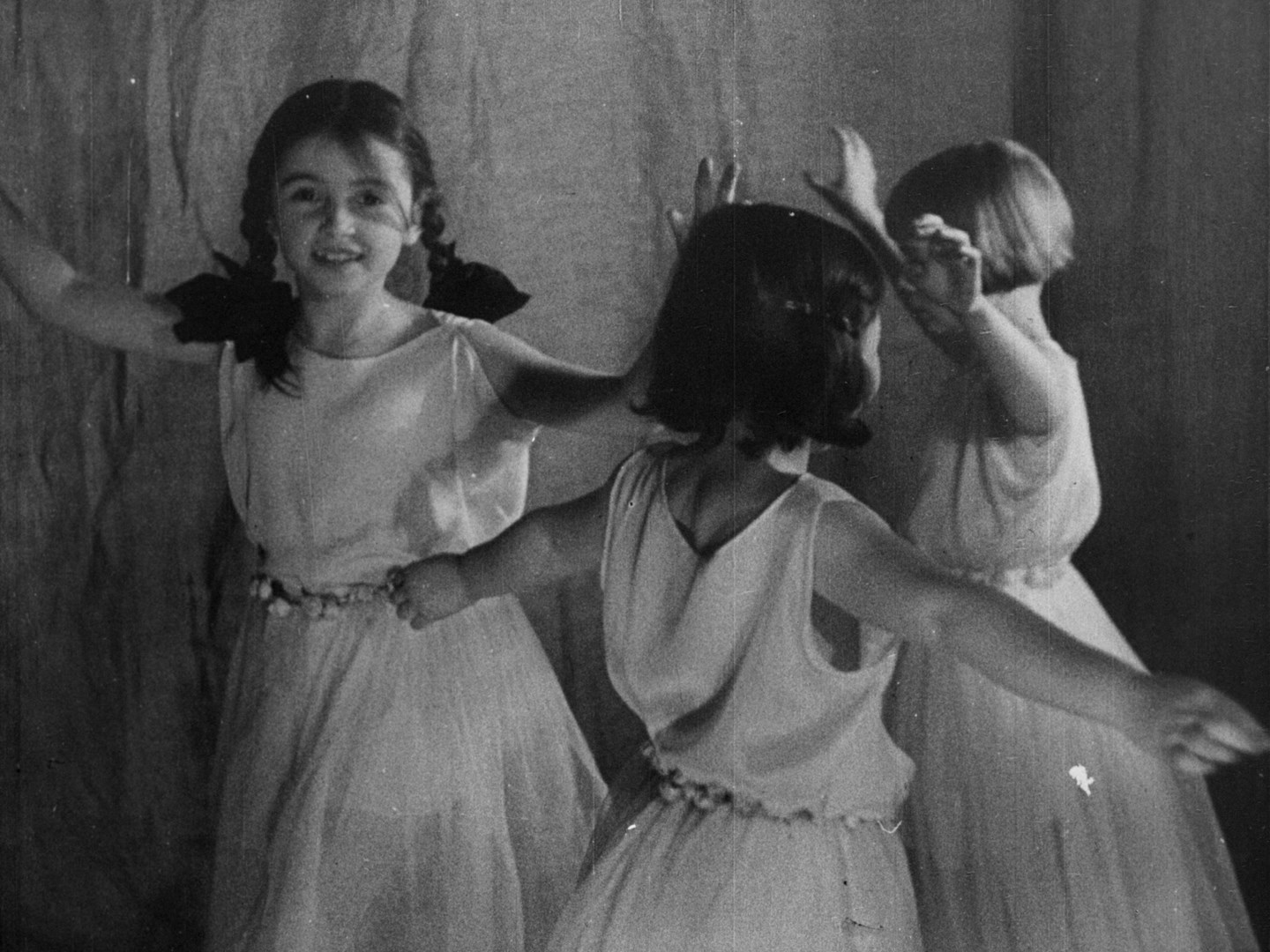 >> View collection This collection of newsreels held by the National Film Archive in Warsaw is largely made up of materials produced by the Polish Telegraphic Agency (PAT). PAT was founded in 1918 as the government press agency. In 1928 it started releasing weekly 10 minute newsreels, initially with a focus on domestic issues. With time foreign news was added, largely acquired from world news agencies.
>> View collection This collection of newsreels held by the National Film Archive in Warsaw is largely made up of materials produced by the Polish Telegraphic Agency (PAT). PAT was founded in 1918 as the government press agency. In 1928 it started releasing weekly 10 minute newsreels, initially with a focus on domestic issues. With time foreign news was added, largely acquired from world news agencies.
 >> View collection This WW1 Collection held by the National Film Archive in Warsaw includes newsreels, documentaries and feature films relating to the First World War and its aftermath. Among them there are unique documentary materials from the Polish-Bolshevik war of August 1920 (the battle of Nasielsk).
>> View collection This WW1 Collection held by the National Film Archive in Warsaw includes newsreels, documentaries and feature films relating to the First World War and its aftermath. Among them there are unique documentary materials from the Polish-Bolshevik war of August 1920 (the battle of Nasielsk).
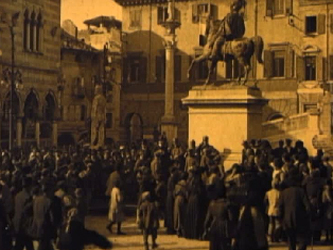 >> View collection FCI gives access to two collections: Films by Luca Comeria and treasures of Italian Silent film from the period of the First World War. The collection of films shot by Luca Comerio, a pioneer of Italian cinema, covers a period from the beginning of the 20th century until about 1920 and consists of over 30 works, including documentaries, excerpts and short comedy sketches.
>> View collection FCI gives access to two collections: Films by Luca Comeria and treasures of Italian Silent film from the period of the First World War. The collection of films shot by Luca Comerio, a pioneer of Italian cinema, covers a period from the beginning of the 20th century until about 1920 and consists of over 30 works, including documentaries, excerpts and short comedy sketches.
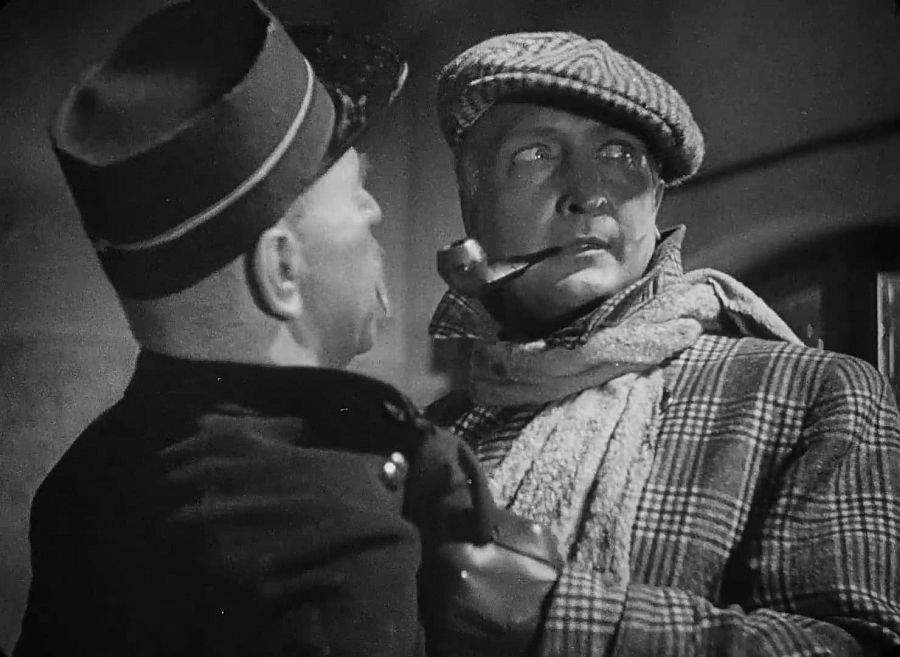 >> View collection The collection provided by the Murnau Foundation includes the first few minutes of their digitized films, as well as some advertising films and some stills and production photos.
>> View collection The collection provided by the Murnau Foundation includes the first few minutes of their digitized films, as well as some advertising films and some stills and production photos.
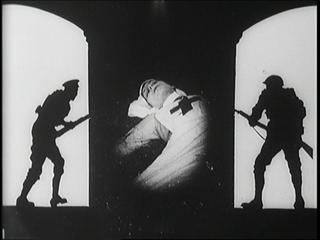 >> View collection IWM has an extensive collection relating to the First World War including diaries and letters, works of art, photographs, three dimensional objects, books, pamphlets and film. The Film Archive holds around 250 hours (projected at 18fps) of First World War material. The collection illustrates all aspects of the conflict, both at home and on the fighting fronts. It includes the renowned film The Battle of the Somme - now granted UNESCO Memory of the World status – which shows trench warfare as captured by official army cameramen.
>> View collection IWM has an extensive collection relating to the First World War including diaries and letters, works of art, photographs, three dimensional objects, books, pamphlets and film. The Film Archive holds around 250 hours (projected at 18fps) of First World War material. The collection illustrates all aspects of the conflict, both at home and on the fighting fronts. It includes the renowned film The Battle of the Somme - now granted UNESCO Memory of the World status – which shows trench warfare as captured by official army cameramen.
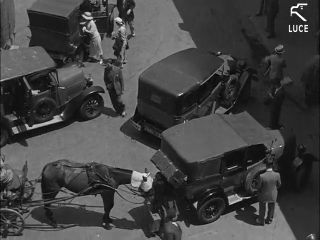 >> View collection 3,000 items from a unique collection of cinematographic non-fiction and fiction works, since the silent film era to our days, black and white and colored, short and long, featuring titles of different topics from history to culture, by a myriad of directors, including, among them the first works of great masters like Rossellini, Antonioni, Comencini, De Seta, and other famou
>> View collection 3,000 items from a unique collection of cinematographic non-fiction and fiction works, since the silent film era to our days, black and white and colored, short and long, featuring titles of different topics from history to culture, by a myriad of directors, including, among them the first works of great masters like Rossellini, Antonioni, Comencini, De Seta, and other famou
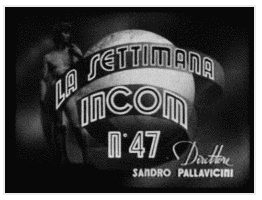 >> View collection This collection includes around 14,000 items from one of the most famous Italian newsreel series, covering Italian cultural, social and political events from 1946 to 1965. The newsreel collection in its whole portrays the development of Italy in this time period.
>> View collection This collection includes around 14,000 items from one of the most famous Italian newsreel series, covering Italian cultural, social and political events from 1946 to 1965. The newsreel collection in its whole portrays the development of Italy in this time period.
>> View collection The Joan Capdevila Nogués Fund gives access to a representative selection of the best film productions by Catalan filmmaker Joan Capdevila Nogués, whose films cover and touch on topics such as catalan geography, traditions, dances, popular events, art, history and industries. Throughout his life Joan Capdevila Nogués created over a hundred films. Find more information on the life and work of this independent filmmaker at archive.org
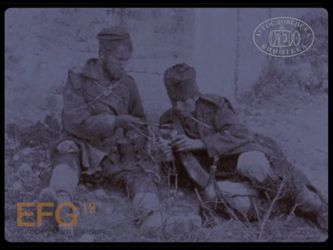 >> View collection Jugoslovenska Kinoteka makes available around 70 films from their collection relating to the Balkan War and World War I.
>> View collection Jugoslovenska Kinoteka makes available around 70 films from their collection relating to the Balkan War and World War I.
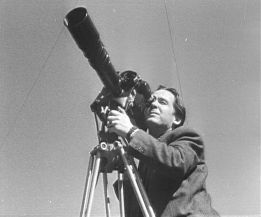 >> View collection EFG presents the complete collection of 700 Finlandia-Katsaus newsreels produced between 1943 and 1964. When they came into being with WW II dragging on, the popular “from the front” newsreels produced by the Defence Forces began to lose credibility. As a counterweight to militaristic descriptions of the fighting, they focused on civilian subjects and on raising morale on the home front.
>> View collection EFG presents the complete collection of 700 Finlandia-Katsaus newsreels produced between 1943 and 1964. When they came into being with WW II dragging on, the popular “from the front” newsreels produced by the Defence Forces began to lose credibility. As a counterweight to militaristic descriptions of the fighting, they focused on civilian subjects and on raising morale on the home front.
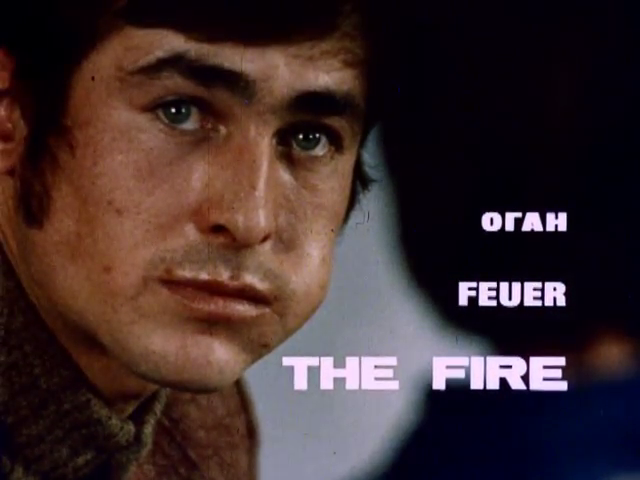 >> View collection Kinoteka na Makedonija gives acces to its collection of digitally restored films, consisting of 16 of the most interesting films from the history of Macedonian cinema. The collection includes the digitally restored versions of the films from two of the most prolific Macedonian filmmakers Stole Popov and Ljubisha Georgievski.
>> View collection Kinoteka na Makedonija gives acces to its collection of digitally restored films, consisting of 16 of the most interesting films from the history of Macedonian cinema. The collection includes the digitally restored versions of the films from two of the most prolific Macedonian filmmakers Stole Popov and Ljubisha Georgievski.
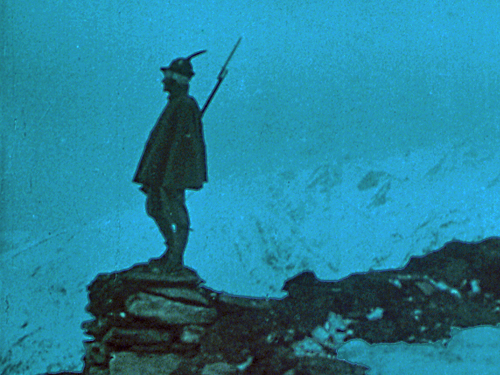 >> View collection The Cineteca del Friuli holds in its collections a selection of Italian silent films that make up the "Great War Fund" and can be made available to the audience. They include numerous restorations curated by the Cineteca itself over the years, originating from nitrate copies, and various other acquisitions.
>> View collection The Cineteca del Friuli holds in its collections a selection of Italian silent films that make up the "Great War Fund" and can be made available to the audience. They include numerous restorations curated by the Cineteca itself over the years, originating from nitrate copies, and various other acquisitions.
 >> View collection The Kinemathek Bern provides ten films by the well known photographer and documentarian Kurt Blum (1922 – 2005). Blum followed in his work high aesthetic standards and gained numerous international awards.
>> View collection The Kinemathek Bern provides ten films by the well known photographer and documentarian Kurt Blum (1922 – 2005). Blum followed in his work high aesthetic standards and gained numerous international awards.
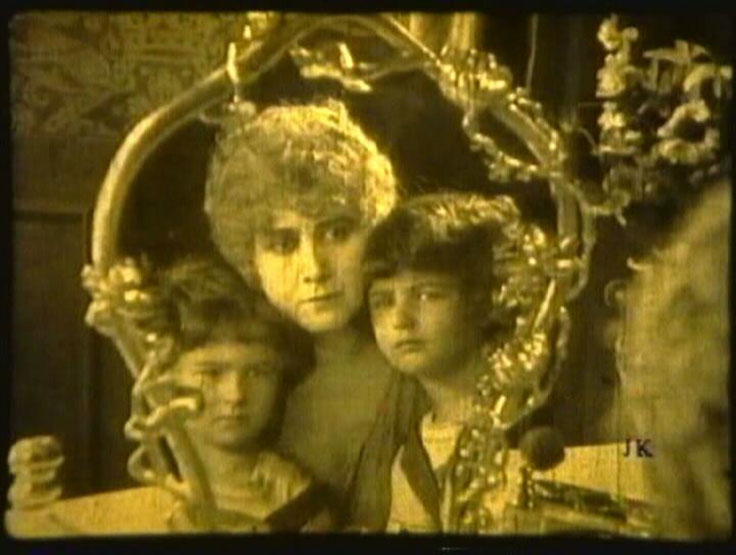 >> View collection Magyar Nemzeti Digitális Archívum és Filmintézet (MaNDA) makes available 11 films from their collection relating to World War I.
>> View collection Magyar Nemzeti Digitális Archívum és Filmintézet (MaNDA) makes available 11 films from their collection relating to World War I.
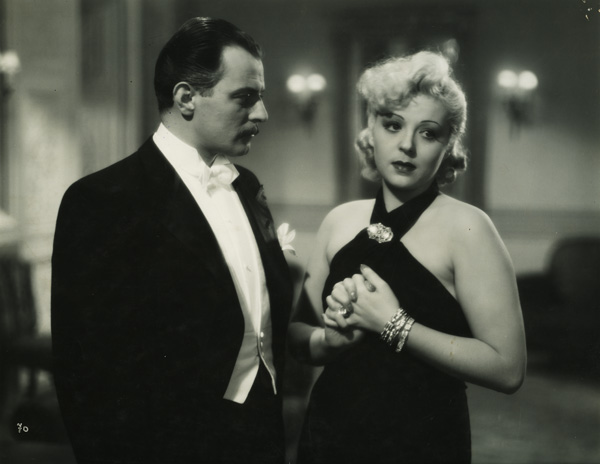 >> View collection The selection of around 1,000 film stills covers the period from the beginnings of Hungarian cinema to 1947 and includes early films of world famous directors such as Alexander Korda and Michael Curtiz (Mihály Kertész).
>> View collection The selection of around 1,000 film stills covers the period from the beginnings of Hungarian cinema to 1947 and includes early films of world famous directors such as Alexander Korda and Michael Curtiz (Mihály Kertész).
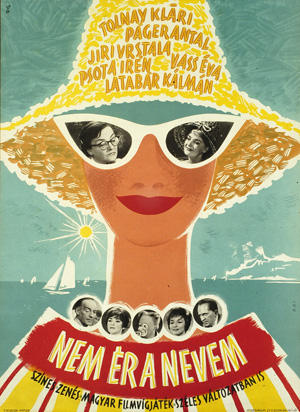 >> View collection Magyar Nemzeti Filmarchívum contributes approx. 1,200 film posters, which provide an overview of the Hungarian poster art from the beginnings of Hungarian cinema in 1900 to the 1990s.
>> View collection Magyar Nemzeti Filmarchívum contributes approx. 1,200 film posters, which provide an overview of the Hungarian poster art from the beginnings of Hungarian cinema in 1900 to the 1990s.
>> View collection The National Cinema Museum in Turin makes available films shot in 9,5mm format in several decades, from the early 1920s to the late 1950s. The films are all amateur footage showing plays at home, ceremonies, fragments of trips to the mountains or to the seaside, clips from festivals and parades, etc..
>> View collection The National Cinema Museum in Turin makes available a selection of fiction and non-fiction films of the silent age preserved in its collection. While some of the non-fiction films document important events, others capture the everyday life of people mainly in the 1910s.
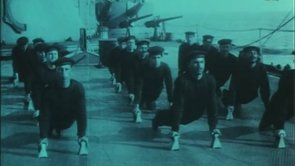 >> View collection The National Cinema Museum in Turin makes available a series of fiction and documentary films preserved in its collection. The titles selected include some documentaries assembled with material shot by the Sezione Cinematografica del Regio Esercito Italiano [Royal Italian Army Film Department] and three fiction films which are useful for exemplifying the diverse ways of featuring war themes within entertainment cinema.
>> View collection The National Cinema Museum in Turin makes available a series of fiction and documentary films preserved in its collection. The titles selected include some documentaries assembled with material shot by the Sezione Cinematografica del Regio Esercito Italiano [Royal Italian Army Film Department] and three fiction films which are useful for exemplifying the diverse ways of featuring war themes within entertainment cinema.
>> View collection The National Cinema Museum in Turin offers online a small number of films belonging to the “Fondo Bogino” preserved in its archive. These films were mostly shot between the late 1920s and the early 1950s, by the Turinese photographer and amateur filmmaker Luis Bogino (1892 – 1960).
 >> View collection The Czech National Film Archive makes eight Czech feature films from the silent film era available via EFG. An overview of the history of the Czech documentary film provides the collection "Czech Documentary Films". Up to 200 films from 1898 to 1928 can be viewed on EFG.
>> View collection The Czech National Film Archive makes eight Czech feature films from the silent film era available via EFG. An overview of the history of the Czech documentary film provides the collection "Czech Documentary Films". Up to 200 films from 1898 to 1928 can be viewed on EFG.
>> View collection The NFA film collection contains newsreels, documentary and feature films, produced in the period 1914 – 1934. The most interesting part of the collection includes the images of Czechoslovak volunteers and legionnaires fighting in the Russian, French and Italian army.
 >> View collection Via the EFG, the Czech National Film Archive gives access to photos to Czech feature films until 1920. A lot of films from this period are considered to be lost and the provided photos are a unique sources documenting the visual form of the film.
>> View collection Via the EFG, the Czech National Film Archive gives access to photos to Czech feature films until 1920. A lot of films from this period are considered to be lost and the provided photos are a unique sources documenting the visual form of the film.
 >> View collection The state-financed Cultural Souvenir Films were produced by The National Film Board of Norway (established in 1948), and were part of a public enlightenment programme of the new social democracy, where old Norwegian customs were central to rebuilding a national identity after WWII.
>> View collection The state-financed Cultural Souvenir Films were produced by The National Film Board of Norway (established in 1948), and were part of a public enlightenment programme of the new social democracy, where old Norwegian customs were central to rebuilding a national identity after WWII.
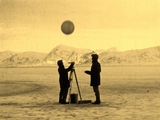 >> View collection On December 14, 1911, Roald Amundsen, accompanied by four men, won the race to reach the South People. One of the most important documents from this expedition is The South Pole Film, one of four documents from Norway included on the UNESCO international register for the Memory of the World.
>> View collection On December 14, 1911, Roald Amundsen, accompanied by four men, won the race to reach the South People. One of the most important documents from this expedition is The South Pole Film, one of four documents from Norway included on the UNESCO international register for the Memory of the World.
 >> View collection This collection of more than 90 commercial films dates from a period of prosperity in Norway - a period when social differences diminished and most people could afford to purchase the products advertised for in this collection: clothes, vehicles of transportation, household appliances, and more.
>> View collection This collection of more than 90 commercial films dates from a period of prosperity in Norway - a period when social differences diminished and most people could afford to purchase the products advertised for in this collection: clothes, vehicles of transportation, household appliances, and more.
 >> View collection Oil was found in the Norwegian sector of the North Sea in 1969, the same year man first walked on the moon. The film and video material in the Ekofisk collection is characterized by the technological enthusiasm and optimism typical of the period.
>> View collection Oil was found in the Norwegian sector of the North Sea in 1969, the same year man first walked on the moon. The film and video material in the Ekofisk collection is characterized by the technological enthusiasm and optimism typical of the period.
 This collection presents a selection of the silent film material in the National Library of Norway. The collection includes Norway’s earliest extant fiction film: Under forvandlingens lov ( Under the law of transformation ) directed by Halfdan Nobel Roede in 1911. The collection also includes several travelogues, amateur films, orphan works, and more.
This collection presents a selection of the silent film material in the National Library of Norway. The collection includes Norway’s earliest extant fiction film: Under forvandlingens lov ( Under the law of transformation ) directed by Halfdan Nobel Roede in 1911. The collection also includes several travelogues, amateur films, orphan works, and more.
 >> View collection In many of the neutral countries, daily life continued more or less unaffected by the war. The films from the Nasjonalbiblioteket (National Library of Norway) illustrate the quotidian life in Norway during the years 1914-1918, far removed from the trenches. However, information about the war reached Norway through international newsreels from companies such as Gaumont, Éclair and Pathé, often with Norwegian intertitles - these items composes a part of the Norwegian contribution to the EFG1914 project.
>> View collection In many of the neutral countries, daily life continued more or less unaffected by the war. The films from the Nasjonalbiblioteket (National Library of Norway) illustrate the quotidian life in Norway during the years 1914-1918, far removed from the trenches. However, information about the war reached Norway through international newsreels from companies such as Gaumont, Éclair and Pathé, often with Norwegian intertitles - these items composes a part of the Norwegian contribution to the EFG1914 project.
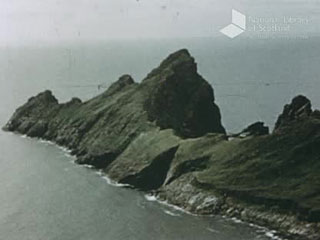 >> View collection The selection of films from the National Library of Scotland on European Film Gateway are mostly non-fiction, and include documentaries, newsreels, educational material, television, public information films, industrial, advertising and promotional material.
>> View collection The selection of films from the National Library of Scotland on European Film Gateway are mostly non-fiction, and include documentaries, newsreels, educational material, television, public information films, industrial, advertising and promotional material.
>> View collection (Austria in Sound and Vision) was the first state-produced weekly newsreel series in Austria that ran from 1933 to 1938. Under the control of the short-lived Austrofascist state, the weekly newsreel became an important tool for propagating a carefully-honed image of “Austrianness” to the local cinema-goers.
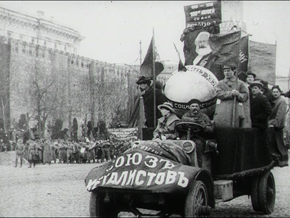 >> View collection The Kinonedelja (Kino-Week) newsreels constitute the first films of Dziga Vertov. A total of 43 issues, each containing an average of 5 to 7 different items, were produced between May 1918 and June 1919. Vertov joined the newsreel’s ranks as a secretary but by the fall of 1918 had taken on full responsibility for the series, defining the content and structure of each issue.
>> View collection The Kinonedelja (Kino-Week) newsreels constitute the first films of Dziga Vertov. A total of 43 issues, each containing an average of 5 to 7 different items, were produced between May 1918 and June 1919. Vertov joined the newsreel’s ranks as a secretary but by the fall of 1918 had taken on full responsibility for the series, defining the content and structure of each issue.
 Deutsch
Deutsch English
English Čeština
Čeština Dansk
Dansk Français
Français Italiano
Italiano Lietuvių
Lietuvių Magyar
Magyar Nederlands
Nederlands Norsk
Norsk Português
Português Suomi
Suomi
